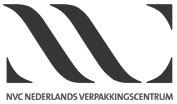Fizzy drinks and bottled water create a thirst for PET in BRIC Nations
The demand for flexible packaging chemical polyethylene terephthalate (PET) witnessed growth of around 7% CAGR last decade, due to its diverse application in a wide range of new products developed by fast moving consumer goods (FMCG) and food sector companies, according to chemicals intelligence provider GBI Research. GBI Research analysis indicates that fast growing economies and strong production industries will lead Brazil, Russia, India and China (BRIC) to become dominant forces in the global PET market.
A significant portion of demand for PET came from the Asia-Pacific region, which accounted for 40.6% of global PET demand during 2010. This is expected to increase to 47.8% by 2020, as China is rapidly emerging as a global petrochemical products manufacturing hub. Production in China enjoys the advantage of relatively low operating costs and, as a result, there have been huge capacity PET capacity additions in the country, with the country accounting for almost half of Asia-Pacific’s import volumes during 2010.
China is anticipated to be the PET market leader towards 2020 due to major PET players focusing their operations within the country. The announcement of anti-dumping duties on imports from other regions, alongside significant capacity additions, means that Brazil and Russia’s PET markets are also expected to expand towards 2020. In addition, India’s large population is causing consumption of packaged goods to rise, creating increased demand for PET capacity additions.
Flexible packaging will continue to grow in importance as major retail chains demand greater product protection and longer shelf-life for various products. Carbonated soft drinks (CSD) accounted for an impressive share of 31.5% in the demand for PET during 2010, while the food and beer sectors accounted for respective shares of 22.4% and 11.4%. According to GBI Research’s analysis, PET packaging is expected to increase its share in the packaging sector towards 2020 due to better gas barriers and ultraviolet (UV) light protection, which extends the shelf-life of PET-packaged products, while new hot-filling processes are creating new opportunities for PET packaging for pasta and sauces.
During 2011, beer distilleries also adopted PET bottles for use as packaging, which is expected to continue towards 2020 due to advantages in product quality, transport and bar regulations concerning the use of glass in outdoor areas.
Global PET demand stood at 6,472,350 tons in 2000, increasing at a compound annual growth rate (CAGR) of 6.9% to reach 12,621,553 tons in 2010. This upward trend is expected to continue in the near future, with global PET demand tipped to reach 23,452,281 tons by 2020, following a forecast CAGR of 6.4% (Press Release GBI, 10 May 2012).

